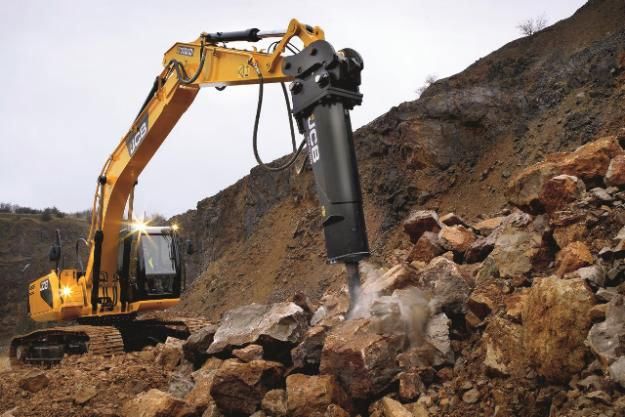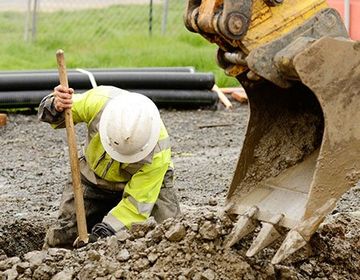Thorough Exploration: The Science Behind Superior Excavation Practices
From old hand tools to modern hydraulic excavators, the evolution of excavation techniques has been a testament to human ingenuity and technical innovations. What absolutely sets remarkable excavation practices apart is a deep understanding of geological principles, combined with the usage of sophisticated devices and approaches.
Development of Excavation Methods
Throughout background, the advancement of excavation methods has actually played a critical function ahead of time construction practices and archaeological explorations. From the basic devices used by our ancestors to the innovative equipment utilized in modern times, the progression of excavation techniques has substantially changed how we come close to different projects.
In ancient times, manual labor with basic tools such as wheelbarrows, shovels, and pickaxes was the primary method of excavation. This labor-intensive procedure restricted the deepness and extent of excavations, typically causing sluggish progress and limited access to particular websites. Nevertheless, as people progressed, so did the strategies and devices made use of for excavation.
The Industrial Revolution marked a transforming point in excavation exercise with the intro of steam-powered machinery. This development reinvented the area, enabling for faster and more substantial excavations. In contemporary times, modern technology plays a pivotal function in excavation, with developments like general practitioner systems, drones, and 3D scanning improving precision and efficiency in the field. The advancement of excavation techniques remains to form the method we build, discover, and recognize the world around us.
Duty of Innovation in Excavation

The assimilation of advanced innovation has actually essentially changed the field of excavation, enhancing accuracy and performance to extraordinary levels. Among the crucial technical advancements that has actually dramatically affected excavation techniques is the use of general practitioner systems. These systems enable exact mapping of excavation sites, enabling drivers to properly situate below ground utilities and structures. In addition, making use of telematics in excavation equipment has actually allowed real-time tracking of maker efficiency, leading to aggressive maintenance and enhanced functional performance.
Furthermore, the arrival of 3D modeling and simulation software application has structured the preparation process for excavation tasks. Drivers and designers can currently envision the entire excavation procedure prior to beginning, maximizing and identifying possible obstacles workflow. Together with this, the application of drones in excavation tasks has actually facilitated airborne surveys, volumetric measurements, and website assessments with unequaled speed and precision.
Geological Concepts in Excavation
An understanding of geological concepts is necessary for ensuring the architectural integrity and security of excavation sites. Geological variables play a vital duty in establishing the feasibility and safety and security of excavation tasks.
Moreover, the geological framework of the location, including mistakes, cracks, and rock formations, should be thoroughly evaluated to identify potential threats and obstacles. Digging deep into near mistake lines or unsteady rock formations can result in instability and possible hazards. By carrying out comprehensive geological read review studies and analysis, excavators and designers can develop approaches to mitigate risks and make certain the successful conclusion of excavation tasks. Inevitably, integrating geological principles right into excavation techniques is important for achieving risk-free, reliable, and lasting results.

Most Current Devices for Excavation
In the world of excavation practices, modern innovations in tools have revolutionized the effectiveness and precision of excavation processes. One of the newest tools making waves in the industry is the usage of drones outfitted with advanced imaging modern technology. These drones can give comprehensive aerial studies of excavation sites, using real-time information on topography and possible hazards. This info aids in much better planning and decision-making throughout the excavation process.
Another cutting-edge device acquiring popularity is the implementation of 3D printing innovation for producing personalized excavation devices. This permits the production of specialized devices that are customized to the particular requirements of a task, raising performance and decreasing downtime.
In addition, developments in products scientific research have led to the advancement of stronger and a lot more long lasting excavation devices. septic ohio. Tungsten carbide-tipped excavator add-ons, for instance, offer remarkable efficiency in difficult ground problems, enhancing productivity on-site
Science's Effect on Excavation Practices
In addition, scientific study on dirt technicians and geotechnical engineering has actually offered important insights into dirt behavior, allowing excavation specialists to make informed decisions concerning excavation techniques and soil stablizing techniques. Generally, scientific research continues to drive innovation and renovation in excavation methods, making excavation tasks extra effective, economical, and sustainable.

Conclusion
Finally, the development of excavation techniques has actually been substantially influenced by improvements in technology and a deeper understanding of geological concepts. The current tools and tools used in excavation have actually boosted effectiveness and precision in the area. The application of scientific expertise has actually considerably enhanced excavation practices, bring about a lot more reliable and sustainable methods for excavating numerous kinds of products.
In the realm of excavation practices, contemporary innovations in devices have actually transformed the effectiveness and precision of excavation procedures. By leveraging clinical Resources principles, the excavation industry has actually been able to considerably improve efficiency, accuracy, and security in excavation procedures. GPR allows excavation teams to non-invasively check and map subsurface structures, utilities, and potential hazards, allowing them to intend excavation jobs with better precision and lowered danger of accidents.
Furthermore, scientific research on soil auto mechanics and geotechnical design has provided useful insights right into dirt behavior, permitting excavation professionals to make enlightened choices relating to excavation techniques and soil stabilization methods. On the whole, science proceeds to drive innovation and enhancement in excavation practices, making excavation projects extra reliable, cost-effective, and lasting.